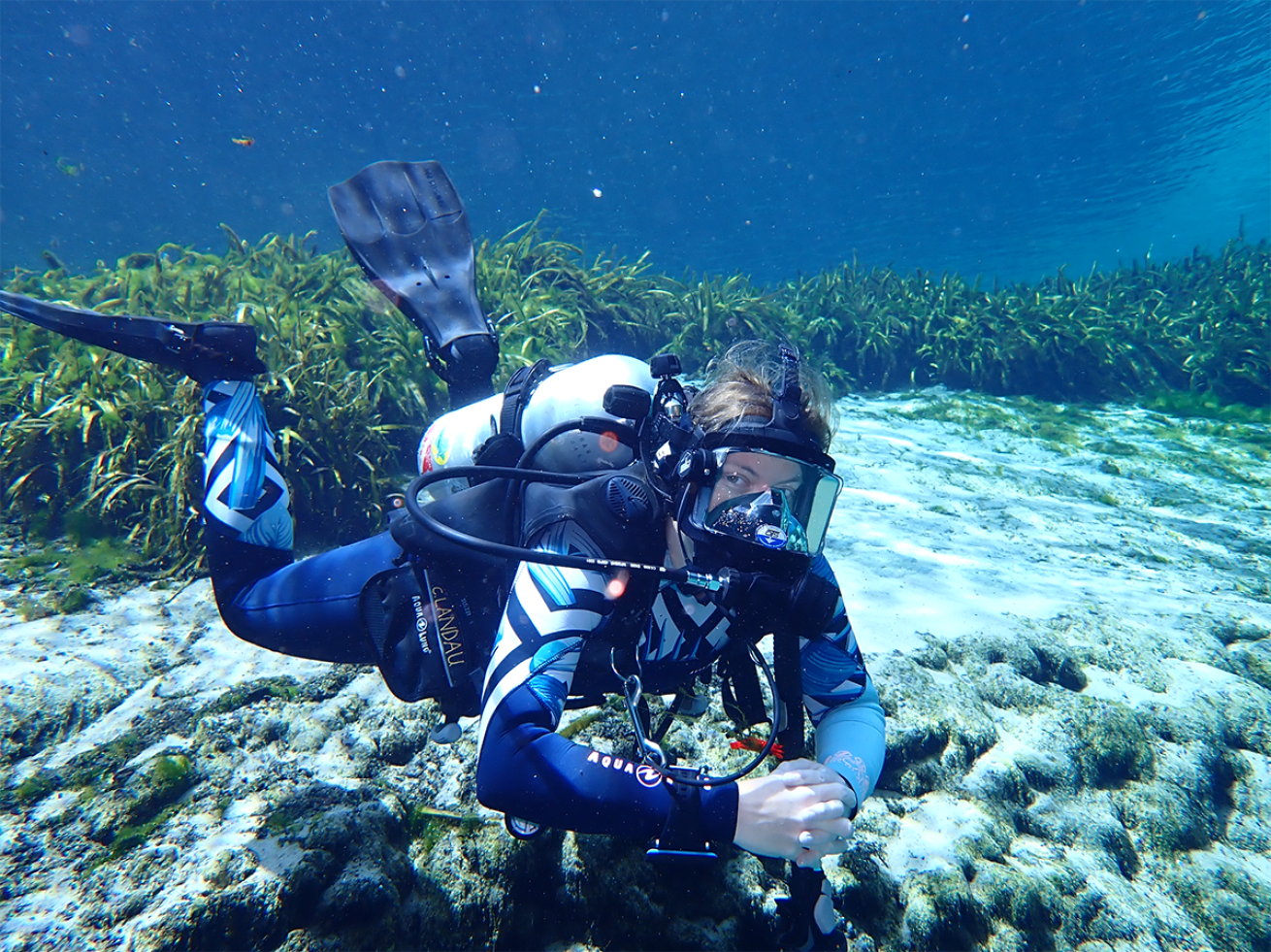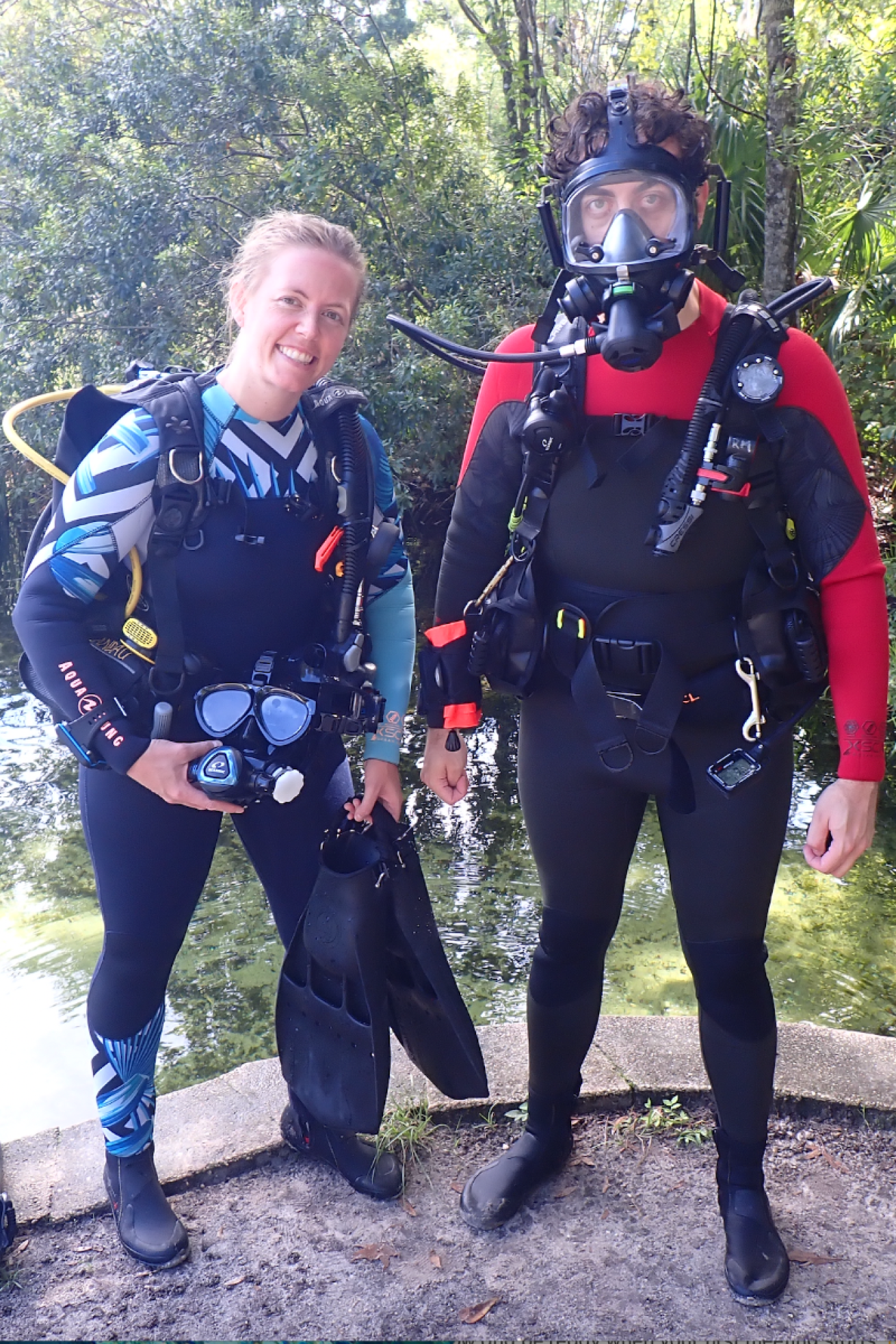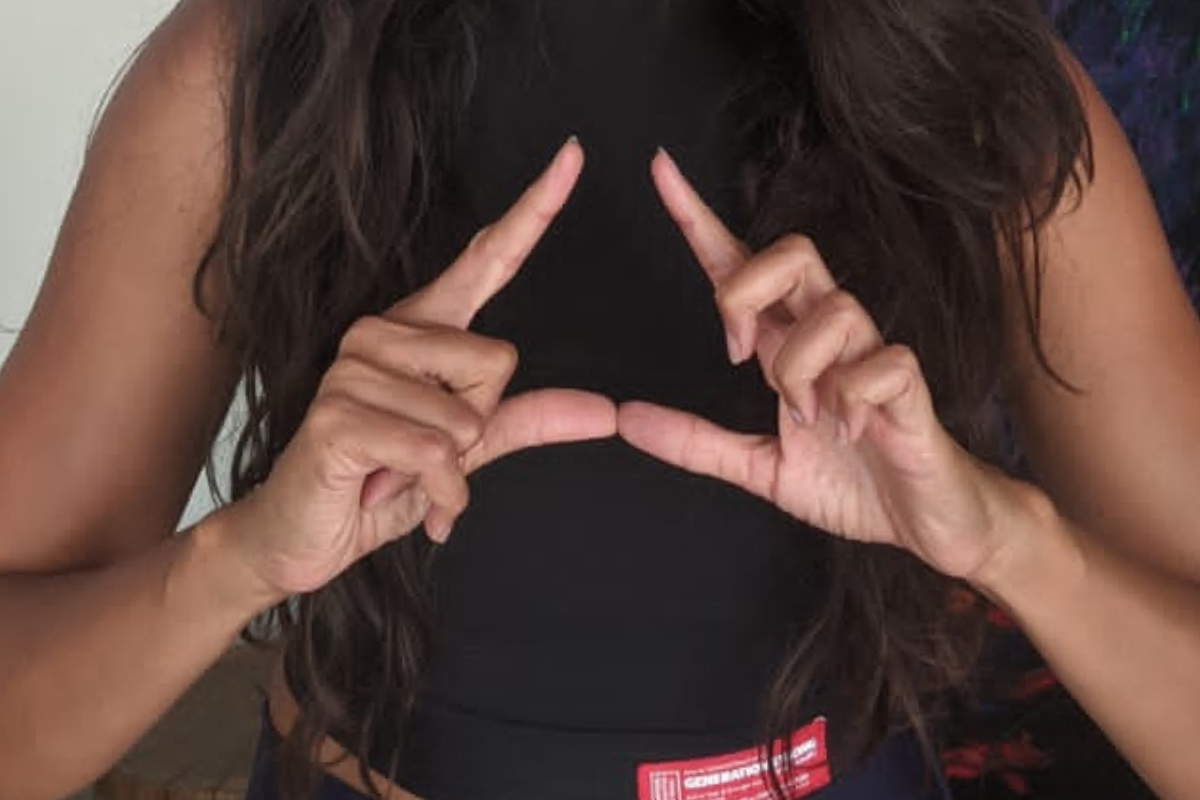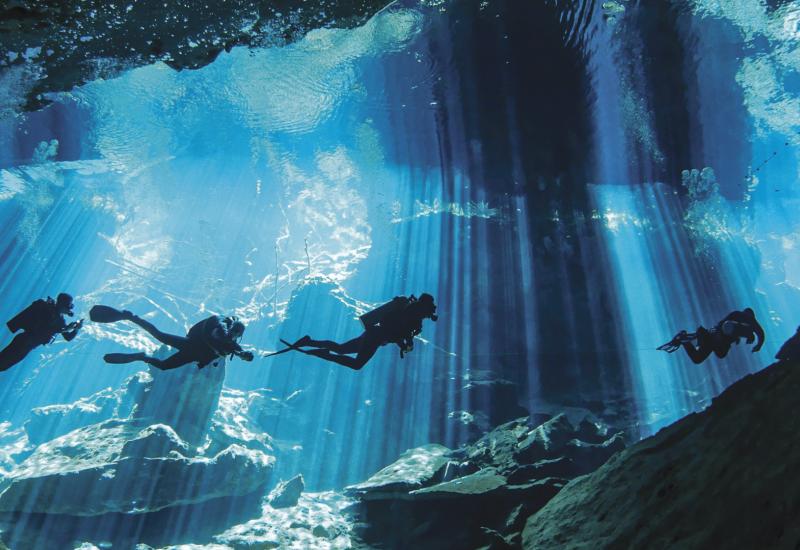Learning to Dive with a Full Face Mask

Courtesy ImageAuthor Candice Landau demonstrates how to use a full face mask.
Kneeling in the silty bottom of De Leon Springs, I prepared to remove my full face mask. My instructor, a veteran of the PADI Full Face Mask course, signaled I was OK to proceed and I replied with the same affirmative hand gesture.
Holding the mask to my face as instructed, I began by loosening the five quick-release tabs, systematically moving my way from bottom to top as I’d been told to do.
I took a couple of deep breaths, closed my eyes and then removed the mask and built-in regulator entirely. My perception narrowed in the quiet darkness.
As I placed the mask back over my face, I struggled to simultaneously avoid sliding down the spring’s steep slope and exhale the tiny stream of bubbles required by PADI training standards. The rubber quick-release tabs tangled in my hair and, for a moment, I wished I had practiced taking it on and off on dry land first.
Pulling the mask free again, the first stirrings of air hunger hit, and with them a sharp metallic taste of adrenaline. I pressed the mask to my face and hit the purge valve. If I could just get a couple of breaths of air I would be okay.
But, I did not inhale air. Instead, I sucked in a lukewarm mouthful of water. I then proceeded to do exactly what I had trained so many students not to do during the Open Water mask remove-and-replace skill—I bolted for the surface.
My instructor surfaced just seconds after me and I was immediately flooded with embarrassment. I didn’t bolt. I had never bolted.
It was a rude awakening. I was no different than most people when confronted with a breath of water. What I should have done as I struggled with the full face mask was instead reach for my alternate regulator—after all, I’d dived with it enough that I could find it blind.
I made a silent vow. I would practice this new skill and with this new gear until I was so comfortable with it my reaction would allow for solving the problem underwater.
Trying not to overthink things any further, I deflated my BCD and sank back down to rejoin the other two students. I took a deep breath and once again, removed the mask. It took a second to adjust to the pressing dark and then I replaced it smoothly, hitting the purge valve to flush the water. I took a tentative breath. Air. I’d done it.
From that point on my confidence grew and I performed the remaining skills with little difficulty, even repeating them all again at a greater depth.
The mask didn’t fit perfectly—bubbles burbled slowly from the top of it—and the two pins jammed into my nostrils hurt a little but I was doing it, using a piece of scuba technology outside the realm of my “normal” gear.
As I hovered over the gushing spring at the bottom of De Leon, I contemplated how this gear would change my diving. Would I one day be able to speak to a buddy underwater? Would I be able to narrate my own mini-documentaries as I meandered through coral reefs or over wrecks? What else would this change? The thrill of having something new to master was back.

Courtesy ImageAuthor Candice Landau and her buddy Robby with their full face masks in Alexander Springs.
Two weeks later I was diving with a full face mask certified buddy in Alexander Springs. The shallow dive site made it easy to practice getting really comfortable and I became a pro at equalizing with different mask models, either pressing my nose into the pins or flat rubber bed just below my nose pocket, depending on the mask.
We practiced clearing and removing and replacing our masks over and over. Finally, we switched to the OTS masks that came with a Buddy Phone. For the first time, I heard a human voice underwater. It wasn’t perfectly clear and there was a lot of background static but it was sound. As we finned to the deeper part of the spring we learned to time our speaking between breaths, and to watch each other's fingers as we pressed the talk button so that we would not talk over one another. It was novel and astonishing and I found myself longing to try it in the ocean.
Fortunately, since then I’ve had the opportunity to do just that. It is still surprising to speak underwater and to be spoken to in turn but I suspect that with enough time this new world, like everything else will become a world I am deeply comfortable in; another world rich with opportunity.











